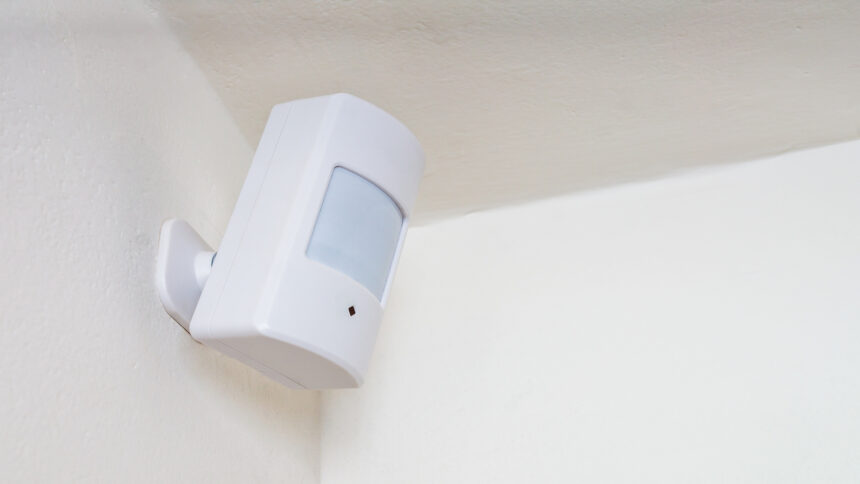Introduction to motion sensors
Imagine a world where your presence alone can trigger a series of actions without lifting a finger. Thanks to the remarkable technology of motion sensors, this futuristic concept is now a reality in our everyday lives. From turning on lights as you enter a room to enhancing security systems, motion sensors have become indispensable in modern society. Let’s delve into the impact and significance of these innovative devices that are revolutionizing how we interact with our surroundings.
How motion sensors work
Have you ever wondered how motion sensors work their magic in our daily lives? These innovative devices detect movement by sensing changes in the infrared energy levels in their surroundings. When an object moves within the sensor’s range, it triggers a response, such as turning on lights or activating alarms.
Motion sensors operate based on various technologies, including passive infrared (PIR), microwave, ultrasonic, and tomographic motion detection. Each type has its unique way of detecting motion and is used for different applications depending on the requirements.
For example, PIR sensors are commonly found in security systems to detect intruders by sensing body heat and movement. Microwave sensors use radio waves to detect motion and are often used outdoors for perimeter security.
Ultrasonic sensors emit high-frequency sound waves that bounce off objects to determine their proximity. Tomographic sensors create a 3D map of an area using radio signals to detect movement accurately.
Types of motion sensors and their uses
Motion sensors come in various types, each designed for specific applications. Passive Infrared (PIR) sensors detect body heat and movement, commonly used in security systems to detect intruders. Ultrasonic sensors emit high-frequency sound waves to sense motion, often used in automatic doors and occupancy detection systems.
Microwave sensors send out microwave pulses and measure the reflection off moving objects, ideal for detecting motion through walls or barriers. Dual Technology (DT) sensors combine two technologies PIR and microwave, for higher accuracy in detecting motion.
Infrared (IR) sensors detect changes in temperature to identify movement, frequently found in automatic faucets and hand dryers. Time-of-Flight (ToF) sensors use light to measure distances accurately, useful in robotics for obstacle avoidance.
Each type of motion sensor plays a crucial role across various industries, enhancing convenience, safety, and efficiency.
The evolution of motion sensor technology
Motion sensor technology has come a long way since its inception. Initially, motion sensors were basic and limited in their functionality. They could only detect movement within a certain range and trigger simple actions like turning on lights.
However, with advancements in technology, motion, sensors have become more sophisticated and versatile. Today, they can detect not only movement but also factors like heat signature and sound. This allows for more accurate detection and automation of various devices and systems.
The evolution of motion sensor technology has also led to the development of smart home devices that can be controlled remotely through apps or voice commands. This level of convenience was once unimaginable but is now a reality thanks to motion sensor innovation.
As technology continues to progress, we can expect even more advanced features from motion sensors in the future. From improved accuracy to greater integration with other smart technologies, the possibilities are endless for how motion sensors will continue to shape our lives.
Applications in our daily lives
Motion sensors have found their way into various aspects of our daily lives, making tasks more convenient and efficient. In homes, they are commonly used for security systems to detect any unauthorized movement. This technology not only provides peace of mind but also enhances overall safety.
In the retail sector, motion, sensors are utilized in automatic doors to welcome customers as they enter stores without the need for manual operation. Additionally, these sensors help conserve energy by controlling lighting in commercial buildings based on occupancy levels.
Moreover, motion sensor lights installed outdoors help illuminate pathways and driveways when someone approaches, improving visibility and security during nighttime hours. In healthcare settings, these sensors can be integrated into equipment to monitor patient movements or assist individuals with disabilities.
The versatility of motion sensors continues to expand as technology advances further integrate them into everyday devices and systems we interact with regularly.
Benefits and drawbacks of motion sensor usage
Motion, sensors offer a range of benefits that make our lives more convenient and efficient. One key advantage is energy savings, as they can automatically turn off lights or appliances when no motion is detected, reducing electricity consumption. This not only helps the environment but also saves money on utility bills.
Another benefit of motion, sensors is enhanced security. They can detect any movement in an area and trigger alarms or notifications, helping to deter intruders and keep properties safe. Additionally, motion sensors are widely used in healthcare settings to monitor patients’ movements and ensure their safety.
However, there are some drawbacks to consider when using motion sensors. False triggers can occur due to pets or other moving objects, leading to unnecessary activations. Privacy concerns may also arise as motion sensors collect data on individuals’ movements within a space.
Despite these drawbacks, the benefits of motion sensor usage outweigh the potential issues for many people who prioritize convenience and efficiency in their daily lives.
Future advancements and potential impact on society
As technology continues to advance rapidly, the future of motion sensors holds immense potential for transforming our society. With ongoing innovations in artificial intelligence and Internet of Things (IoT) integration, motion, sensors are likely to become even more sophisticated and efficient.
Imagine a world where smart homes can anticipate our needs based on our movement patterns, adjusting temperature, lighting, and security settings accordingly. Businesses could utilize advanced motion sensor technology to enhance customer experience through personalized interactions and improved security measures.
Moreover, the healthcare industry could benefit significantly from motion, sensors by monitoring patient movements for early detection of health issues or providing assistance to elderly individuals living independently.
As we look ahead to the future developments in motion sensor technology, it is evident that their impact on society will not only streamline daily tasks but also open up new possibilities for efficiency, safety, and convenience.
Conclusion
Motion, sensors have indeed revolutionized the way we interact with technology and our surroundings. From enhancing security systems to improving energy efficiency, these devices play a crucial role in our daily lives. As technology continues to advance, we can expect even more innovative uses for motion, sensors that will further streamline processes and make our lives easier. With their ability to detect movement accurately and efficiently, motion.sensors are sure to remain an integral part of modern society for years to come.



